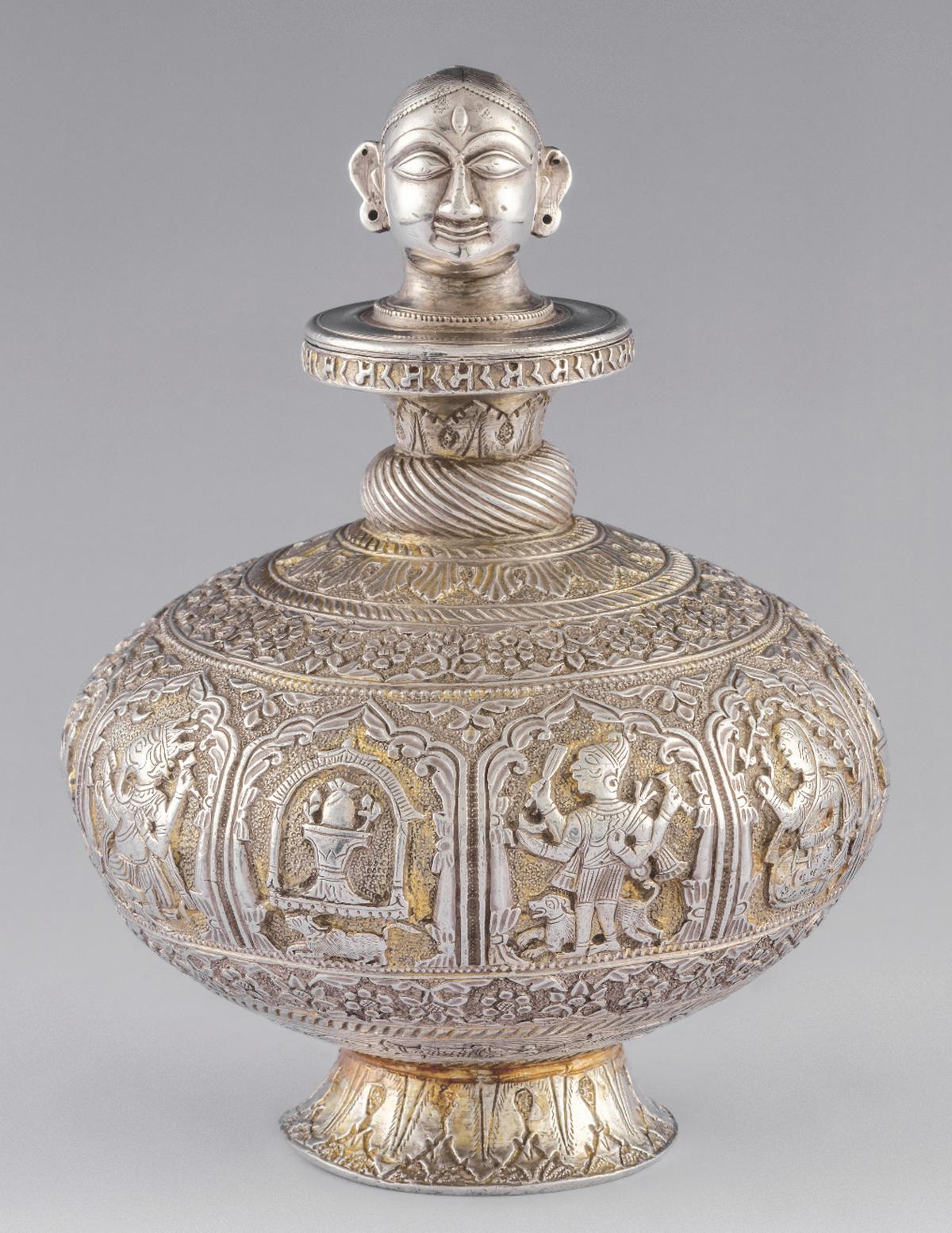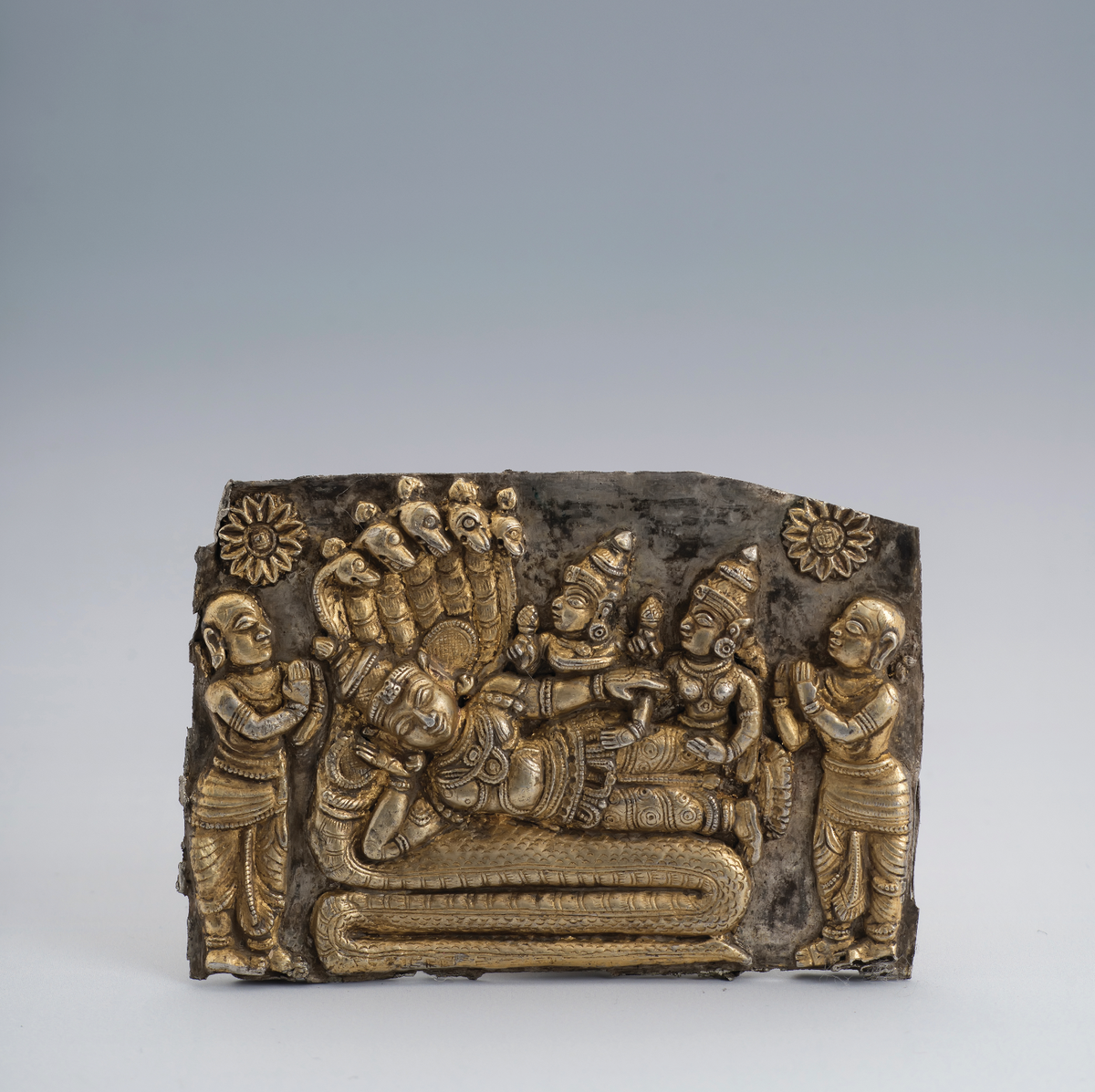(L to R) A silver gilded and enchanted miniature throne; a swan neck ritual flask; and a silver and gold vase made using the Thewa technique from Rajasthan.
Man needs symbols to understand the sacred – a pot, spoon, tray or plate, a plaque or a piece of jewelery provide a glimpse of the mystery and power of the divine. Thus in all our rituals the simple elements from life are brought forward and made sacred. The life-sustaining elements – earth, sky, air, water, fire, sun and moon – are manifested in the form of thrones, temples, flags, urns and lamps.

in makeup of the godsScholar and mythologist Devdutt Patnaik displays such rare items from the collection of Amrapali Museum in Jaipur. The book is fascinating on many levels. Firstly, the beautiful collection and its expression in various styles and motifs – the brainchild of collectors Rajesh Ajmera and Rajeev Arora.
This is then taken to another level by Patnaik, who goes beyond form and function to assess the complex meanings inherent in each object and the purpose of its existence. Dividing the book into five sections, these objects of everyday use are studied from the perspective of the elements, life, people and gods and goddesses.
Gilded Flask and Shoes
A silver gilded ritual flask has flowers, a swan, the ‘Gandeberunda’ or two-headed bird as well as Nandi the bull. Patnaik takes the reader on a journey that begins and ends with water, and its wider role on Earth. Life is nurtured by the environment – flora, fauna, even mythical creatures inhabit a variety of objects, ranging from water pumps decorated with mythological motifs to beautiful botanical motifs. CapricornPositioned on the handle, the guardian of sacred rivers, to the magnificent lion-headed processional scepter that graces the cover of the book.

A water vessel called Gangajali used to store the water of the river Ganges. The cover on the neck has a sculpted face of Goddess Ganga.
Functional items such as spoons, shoes, trays and even items of adornment are elevated to the divine. Nothing is what it seems, as Patnaik reveals, layer by layer, the multidimensional character of each of these objects in the context of India’s vast and ancient mythological tradition.
The last two sections of the book are dedicated to the gods and goddesses. The life-giving properties of the Ganges and other holy rivers are personified by a majestic water vessel. Although it is meant to simply store water, the surface is elaborately decorated with Shiva and Shaiva symbols. The holy trinity of Brahma, Vishnu and Shiva and a host of other demi-gods is the subject of the final section. They appear as symbols, and they adorn plaques and sprinklings of water, each giving life to the invisible.

On the remaining serpent is a silver plaque depicting Vishnu surrounded by Lakshmi.
makeup of the gods Awakens a new understanding of the objects of devotion that adorn many homes in this vast and diverse country where faith, devotion and atonement are all expressed through objects. Purely functional at a glance, the style, design, motifs and craftsmanship combine to elevate each item into the realm of the divine. Through these objects, writes Patnaik, “thoughts reached the farthest corners of the land”.
The author is a jewelery historian, curator and cultural consultant.